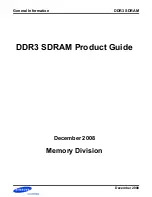
LaCie Ethernet Disk RAID
(Firmware version 1.4)
User Manual
page
Protecting Local Disks
13. If you’re simply overwriting corrupted data on the
same disk that you protected previously, select this
option. Only the data that differs between the backup
and the local disk will be copied to the local disk. This
can minimize the impact to the network, although
the scanning process takes some additional time.
If you’re recovering the backup to a brand new disk,
clear this option. All the data from the backup will be
copied to the new disk without any scanning (there
will be nothing to scan on the new disk).
14. Select the local disk where you want to recover the
data, and select
Next
.
15. If you selected a disk in step 10, go to step 18. If
you selected a partition in step 10, select
Restore
to
a partition to recover to an existing partition on the
selected disk, or select
Clear all partitions and cre-
ate new
to delete all the existing data on the selected
disk and recover only the selected partition.
16. If you selected
Restore
to a partition in step 15, se-
lect the partition where you want to recover the data,
and then select
Next
. (Otherwise, go to step 18.) For
system partitions, the Active column displays Yes.
17. If the selected partition is not the original partition,
select
Yes
to use the selected partition. Otherwise,
select
No
and select a different partition.
18. Select
Yes
to confirm the recovery.
The status screen displays the progress of the recov-
ery. You can cancel it at any time by selecting
Can-
cel
. However, this leaves the disk or partition in an
incomplete state (some of the data will have been
recovered, but not all of it).
TeChNICAl NOTe:
If you replaced the
original hard disk, the new disk must be at least
as large as the original disk. In addition, if you
are recovering a system disk, the system to which
you are recovering the data must be identical to
the original system. For example, if the original
system had a particular type of network adapter,
the system to which you are recovering the data
must have the exact same type of network adapt-
er. Otherwise, the recovered files will not operate
properly.
CAUTION:
This overwrites any existing data
on the selected disk. Although you can subse-
quently recover different data, you cannot recover
the original data.
















































